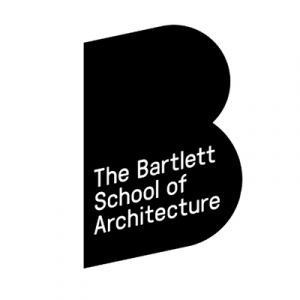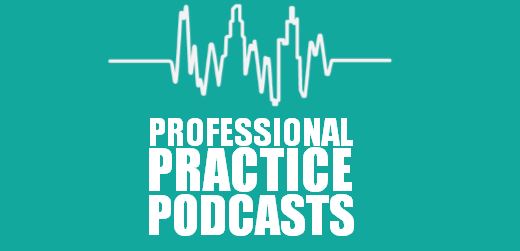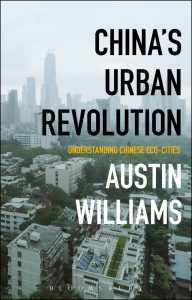The Bartlett Report: Anonymous accusations & recriminations
 by Austin Williams
by Austin Williams
In a report that has taken six months to compile, Howlett Brown, which self-identifies as “The UK’s only people intelligence consultancy” has delivered a devastating critique of the Bartlett School of Architecture’s (BSA) “sexist culture.” Since 1990, the Bartlett (which is part of the University College London) has “more than doubled in size and has notched up more prizes and awards than any other British school.” It is much envied and often reviled.
A whistle-blower – an ex-student – who had attended the BSA from 1998-2002 had apparently made a complaint during her time at the BSA about a member of staff’s sexist comments directed at her. These comments were seemingly not taken seriously. Twenty years later, and similar issues were raised in an alumni newsletter which prompted her to investigate further. Her resulting dossier – of 21 current and ex-graduates’ testimonials and the ensuing media pressure on the university department – formed the basis of the more substantive Howlett Brown external investigation. Their report uncovered allegations of racism, bullying, sexism, and a “toxic learning and teaching culture.”[i]
The report is an exercise in public shaming: calling out academics and professionals (by hint rather than name) and facilitating formal complaints a la class actions. In this Crucible of mass accusation, little regard is given to due process. As a consequence of this report, student complainants seemed to be calling for a 80+ staff members be sacked for crimes unknown. Subsequently, such demands have been removed from social media sites, although postings against various faculty members, vindictive or otherwise, still exist online.
This report creates an insidious trend that will impact all other schools and practices whereby suspicion will be the governing response to staff-student relations. Already departmental meetings in other universities are “learning the lessons” of the BSA, as if all departments are hotbeds of discrimination and lecturers are potential abusers. This is not a healthy way to conduct university life, where free and open enquiry, challenging relationships and feisty disagreement is its raison d’etre.
The consequence of anonymised accusations, unsubstantiated grudges, decades old grievances, personal animosity, professional resentment and even calculated attacks leading to summary dismissals, is not the right atmosphere to engender in any university, let alone within departments that rely on creative tensions. Undoubtedly it will be the case that departments will be under pressure to reject some of the best examples (and leading personalities) from the past that have previously stood as a source of inspiration, on the grounds of their new-found or assumed character flaws, or simply based on their privileged status.
The stepping down of the BSA Head of Department has emboldened the initial whistle-blower who now wants anyone deemed to have been “unfairly failed in any way relating to gender or otherwise… (to) be offered compensation.” The reparations for past non-crimes could include “fees for therapy or medicine as a result of a student’s experience at the Bartlett, through to compensation for a lifetime loss of earnings by those who unfairly received a lower grade and in turn got ‘a worse job than they should have done’,” reports Dezeen magazine. All university departments await, with trepidation, University College London taking this seriously.
This is NOT an unbiased nor a disinterested report: the authors clearly have a political and business axe to grind. Apropos of nothing, mid-way through the report, Howlett Brown states that “EDI must be built into the structural, procedural, and overall organisational mandates of an organisation.” At the time of writing, there are political concerns about the influence of unaccountable organisations on teaching practices, and yet Howlett Brown is confident to pontificate on teaching and syllabus matters. The BSA along with other universities are seriously considering these random suggestions. The report also recommends that further action be taken by “an independent investigator with experience in people, cultural and wellbeing related investigations.” I wonder if they have anyone in mind.
So sensitive is the subject matter of this report, apparently, that the authors provide a trigger warning at the outset. It cautions that “if any person reading this Report feels vulnerable, unsafe, or unwell, before or whilst reading this Report, we recommend and urge the reader to cease reading the Report and take steps to support their mental health, wellbeing, and overall psychological safety. This may include the reader seeking support, guidance or having a companion in their presence at the time.” For those of a super-nervous disposition, it adds: “We recognise that a trigger warning such as this may also be triggering.” Anyone that doesn’t find that both comical and utterly ridiculous at the same time is clearly humourless. But, of course, this is no laughing matter, and the report must be read and nodded along with in hallowed silence. Everything must be acquiesced to.
The consultants, on the other hand, have carte blanche to put students through the pain of “reliving the trauma.” Anyone that became distressed by their own complaints was asked to “liais(e) with UCL to ensure further support was available.” (UCL if you remember, is the organisation being complained against). As an aside, a recent study by King’s College London revealed that a quarter of students saw violence as an acceptable response to forms of speech with which they disagreed. Maybe not all students are completely prone to distress and vulnerability.
 Statistically significant?
Statistically significant?
In brief, the report’s aims were to collect allegations, identify people against whom allegations have been made, and to determine what factors have/may have influenced discrimination and/or harassment (as alleged). The report notes that “the remit of our investigation was not to investigate and determine the merits of every allegation raised during our investigation.” This implies that there may be malicious or false accusations wrapped up in this report. More worryingly, “named individuals have not been presented with, nor have they had the opportunity to respond to, specific allegations against them.” The concept of innocent until proven guilty; or the writ of habeas corpus is anathema to this report and subsequent action by the university. Is seems that the defendant has no knowledge of the charges… and is simply suspended pending yet further investigation. The Brown Howlett report is “based on our assessment of all the evidence… using our wealth of experience of EDI, culture, (and) people practices,” it says. Perhaps students will learn from this report that they can simply declare their own subjective credentials and demand that it is sufficient to earn a pass.
Currently, BSA employs 347 staff and1,743 students.[ii] There were 303 responses in total (combined staff and students). This would equate to 14.5% response rate if confined to one year. But the report accessed BSA’s considerable alumni database to get responses from students over the last 40 years! On a rough estimate, could the response rate be as low as <1%?
The survey results’ statistical relevance shrinks even further with 27.1 per cent of students saying that they have experienced discrimination (43.3 per cent of students saying that they know someone who experienced discrimination). It is worth noting that saying that you have, or saying that you know someone who has, experienced discrimination, might a) not be factually accurate, and b) might be many people focusing on a single accused person, rather than evidence of many discrete occurrences.
For example, the report identifies “misconduct of one particular senior staff member was flagged to us in twenty-four former and current staff and student examples of incidents” while another “twenty-seven participant examples and experiences… alleged serious misconduct involving bullying, misogynistic and anti-Semitic behaviour.” These are clearly potentially serious allegations and need to be proven before action – and potentially justifiable action – is taken, but this does not necessarily document 27 cases. They are also perceptions of discrimination, which is different from discrimination (as defined in the report).
Some staff complaints include “concerns of not feeling respected and supported” (surely, a constant quibble in the relationship between employer and employee). In difficult economic times, “valued” employees often get a shock when they are laid off and discover the uncompassionate side of labour relations. Ironically, in this instance, some of the valued BSA staff and students are demanding that other employees be sacked with no due process. One student Instagram account (linked to this BSA case) said that the University College Union should not agree to these employees’ request for union representation).
Bad or Good?
The report suggests that it has used legal and academic definitions but also colloquial and evolving interpretations of accusations like “harassment” and “racism.” One example of the mistreatment of students includes evidence that “a tutor was alleged to have bullied students by speaking very harshly and behaved disinterested (sic) in teaching.” This is not a capital crime. Indeed, it may reflect more on soul-destroying contemporary institutionalised teaching practices. If we are to avoid causing a student to be upset by harsh words, then the rationale for failing anyone in exams ceases to be.
On a positive note, a number of staff statements declared BSA to be “fantastic,” that “it pursues excellence,” “colleagues are nice” and that “UCL as an organisation on a whole is positive as an employer.” Student comments included: “never felt uncomfortable,” “always assisted appropriately,” “wellbeing was prioritised,” that they “always felt [they] could speak to their design tutors” and that on respondent stated that they were “grateful for the time [they] spent there.”
Conversely, a former student said that their tutor told them that they had “‘barely passed at the end of fourth year’ and that ‘[they] should quit and take a year out because [they] didn’t understand how buildings worked.’” This might be good advice for all we know, but here it is masquerades as bullying. And there’s the rub, anyone feeling hard done, feeling insulted, can now simply complain against members of staff. This breeds the very toxic relationship that the report ignores: one in which the tutor is afraid of confronting students with harsh realities lest a complaint be entered against them.
 Vulnerabilities
Vulnerabilities
The report admits “anonymous reports” containing details of how “three tutors held parties and invited students… some of which allegedly involved drug taking and cocaine and at least five tutors are alleged to have dated students.” While this is not professional – or even legal – behaviour, the students in question are adults and the allegations seem not to suggest that the romantic dalliances breached “UCL’s personal relationship policy.” Where it did, and where allegations are more than rumour, actions should be taken. However, the report concentrates on unproven “power relations” whereby students are regularly referred to as “vulnerable” as if students are passive in the relationship. We are not made aware of the facts, but there might be an alternative reality of students consenting to drug-taking and engaging in legitimate consensual sexual relationships (even though this should be discouraged). Hard to believe, but students are sometimes the ones doing the manipulating. These possibilities, however unprofessional, ill-advised, illegal or simply unappetising do not occur to the report writer.
Unsurprisingly, “staff training” features high on the list of the consultants’ solutions to the abuses of a handful of staff members, as if a) all staff are potential abusers, and b) criminal behaviour is prevented by a Quality Assurance admin session. The Unit structure, rather than one or two bad apples, is deemed to be the problem. (One former student claimed “A few bad apples it may well be, but you are never going to be protected from them”). Notwithstanding that this report is really about a few concerning incidents and culprits, the solution posed is for more support services, more administration, more intervention, more rules, more policies, more guidance, long-term counselling, and a greater concentration on grievance procedures “to address the culture of fear.” Going further, one student calls it “a cult like atmosphere of fear.” With little or no substantiation, it claims that fear has been “woven into the culture” at the BSA. addressed by substantially increasing monitoring, mandatory training, while downplaying actual teaching.
Criticism of criticism
Of course, the crit system comes in for criticism, which seems to be that it is too critical. One student complains that the crit “environment is not conducive for anxious students.” Another that crits are “outdated” and an “ego centric type of way of doing things.” Another incident revealed a student who reportedly was “constantly having [their] work belittled.” There is no indication whether this student’s work was substantially below par (because it was the work that had been belittled, not him/her). For example, one professor allegedly told students to “burn their work” when they thought it was not up to standard and that another student’s work “look[ed] like a hamburger so maybe [they’ll] eat it.” Shocking!
Commentators have now come out of the woodwork to claim that they always knew the crit system was abusive. (Crits are where a student is invited to stand up, present and explain or justify their work. It has been known to help students pitch to clients in the real world). Rowan Moore in The Guardian writes that BSA students are forced to “present their work in sessions known as “crits”, in front of fellow students, to be praised or dismembered by their teachers and eminent visiting critics.” For “dismembered” read “criticised” or “marked”. Eddie Blake says, “when I taught there (BSA), people talked about which staff were abusive, but it was a kind of open secret.” Tsk, tsk. Are these the same people who assert that silence is violence?
One recommendation in the report says that “staff (should be) trained on… how to speak up and challenge… when a critic has spoken inappropriately during a Crit.” Crits may now become cautious environments where critics are slightly less forthright or confident to speak their mind. The upshot is that there will be pressure NOT to ask difficult or challenging questions for fear of condemnation by colleagues, or accusations by students, now or in the future. The upshot might be tame questions, nervous guests, and timid analysis. It might not affect everyone (and mercifully even in a climate of cancel culture, good people still carry on their jobs well), but it is bound to have a chilling effect on the crit process. Without criticism, marks will improve, and university administrators will be happy. But this newly empowered climate of suspicion cannot possibly be a healthy development, even if it is done with the best intentions. The public shaming charade hasn’t ended yet. It cannot possibly end well.
————————————–
[i] The report says: “We need to look at attitudes and prejudices on an individual level, but also look at structures and inequalities in systems and processes that are intrinsically excluding or determined by historic processes that were excluding to particular groups, we need to look at representation across society, and we need to look at overarching processes that are maintaining a status quo that is serving to exclude – intentionally or unintentionally. Removing prejudiced expressions of opinion is not enough and will not alone address racism.”
[ii] Student body: 622 Undergraduates; 1027 Postgraduate taught; 94 Postgraduate research
.






